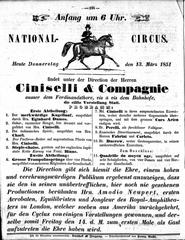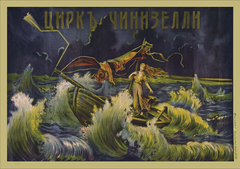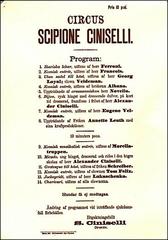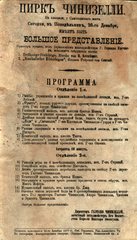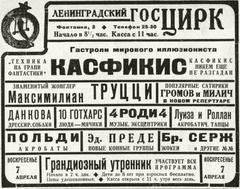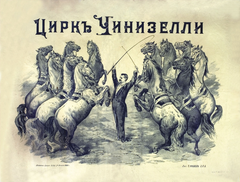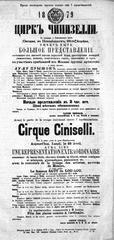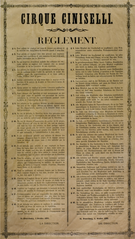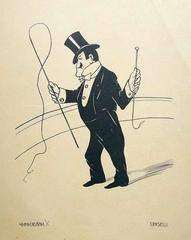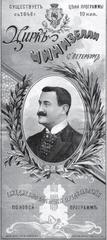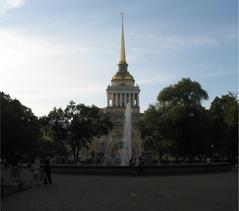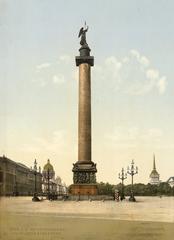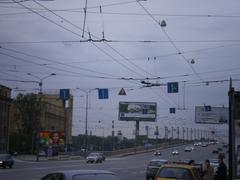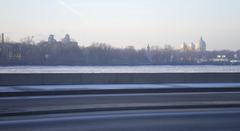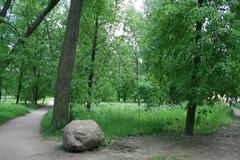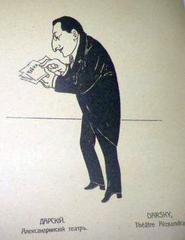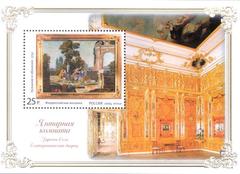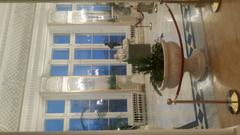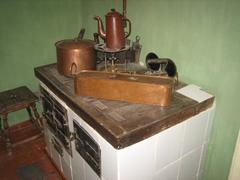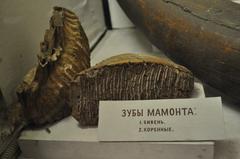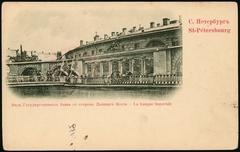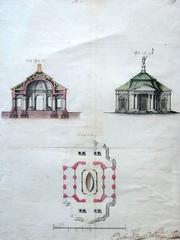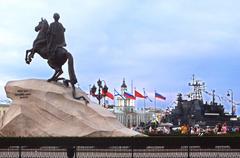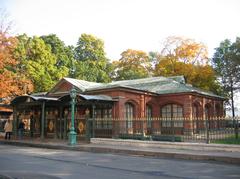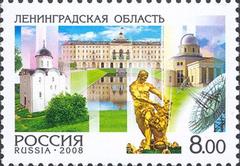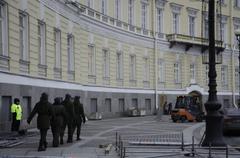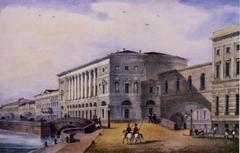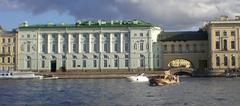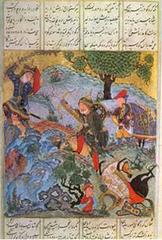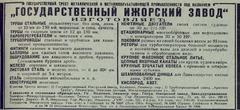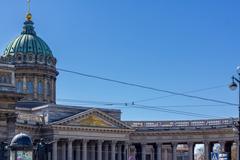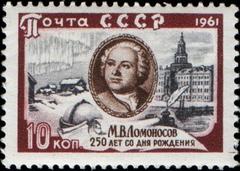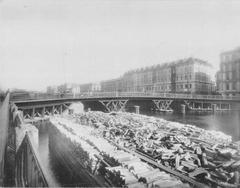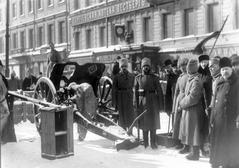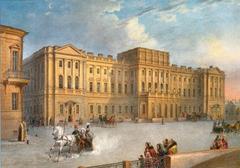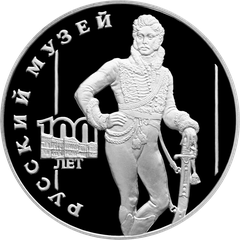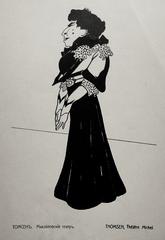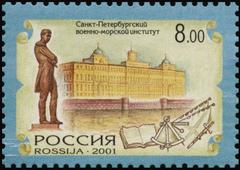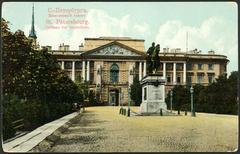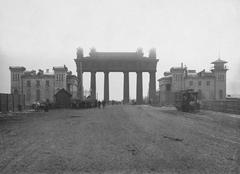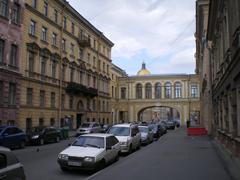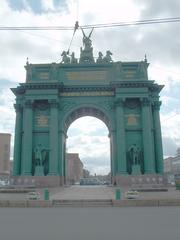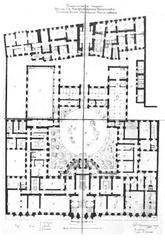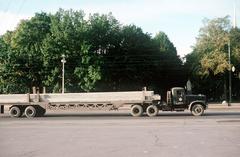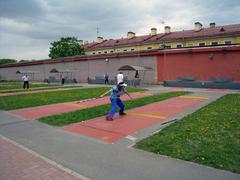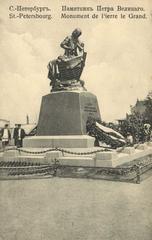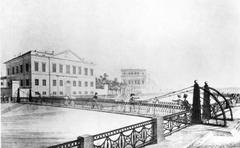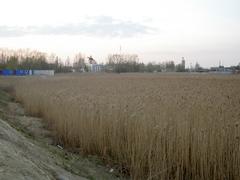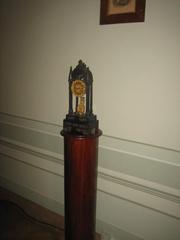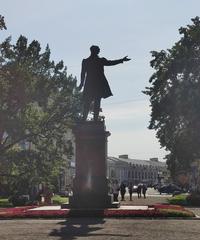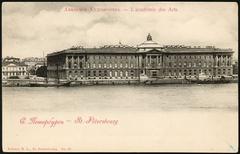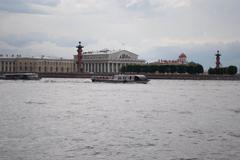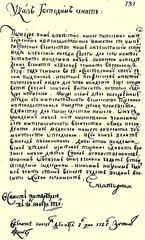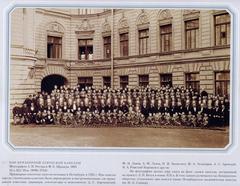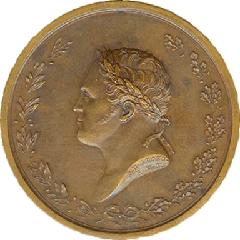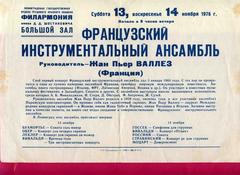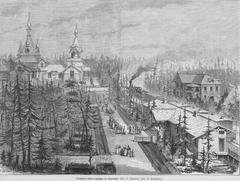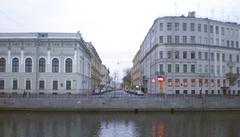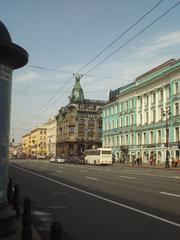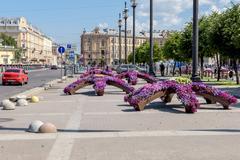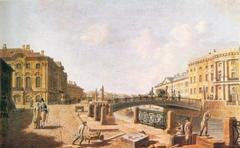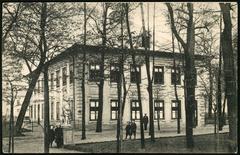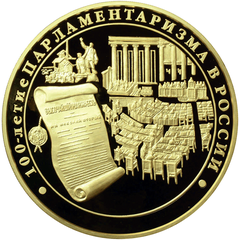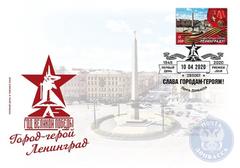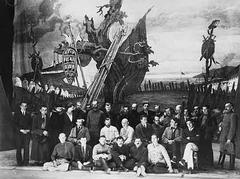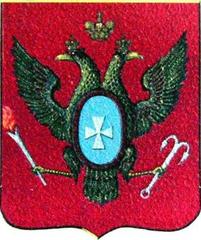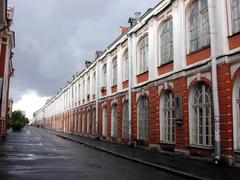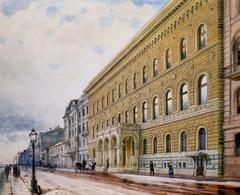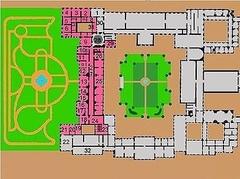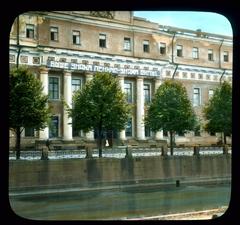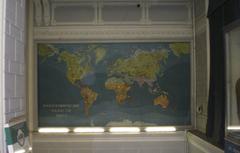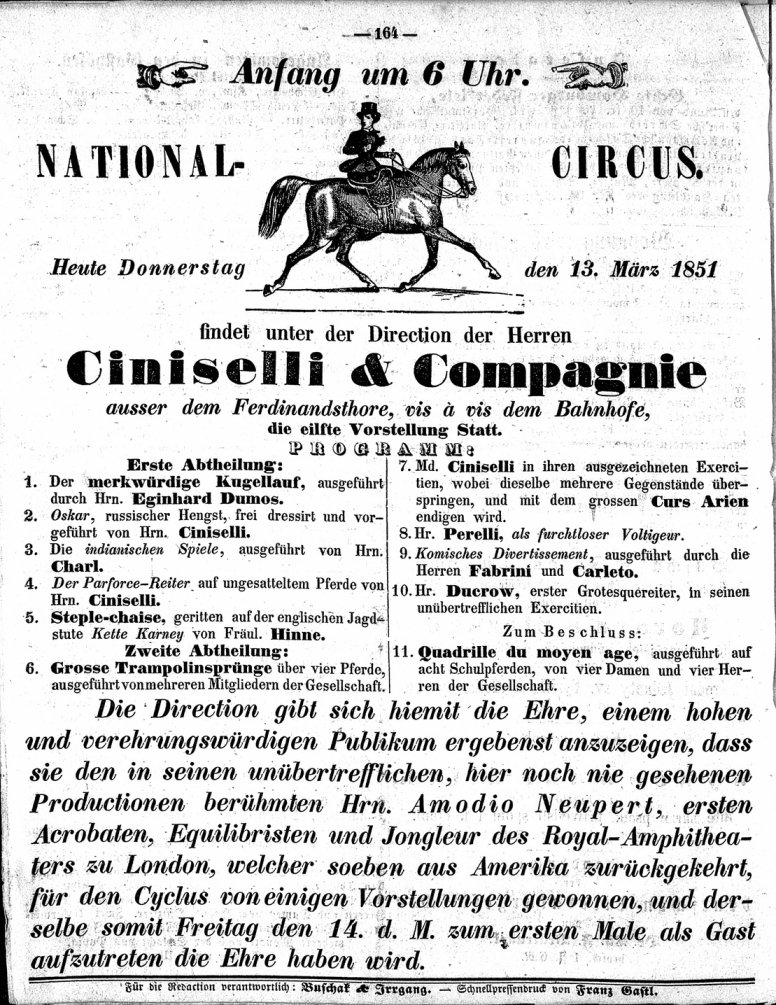
Ciniselli Circus Saint Petersburg: Visiting Hours, Tickets, and Historical Significance
Date: 14/06/2025
Introduction: The Legacy of the Ciniselli Circus
The Ciniselli Circus in Saint Petersburg stands as a monumental testament to the rich history and cultural vibrancy of Russian circus arts. Established in 1877 as Russia’s first stone-built circus, it revolutionized the architectural landscape of entertainment venues and became a beacon of artistic innovation. Nestled on the scenic Fontanka River Embankment, the Ciniselli Circus features a remarkable dome without internal pillars, ensuring unobstructed views, and boasts an enduring legacy that spans world-class performances, pioneering theatrical circus arts, and the world’s first dedicated circus museum.
Founded by Italian equestrian Gaetano Ciniselli, the circus survived historical upheavals such as the Russian Revolution and World War II, evolving into a modern venue that honors tradition while embracing contemporary artistry. Today, the Ciniselli Circus is not only a hub for live performances but also a cultural landmark fostering international artistic exchange and community engagement.
For visitors, understanding the venue’s visiting hours, ticketing options, accessibility, and nearby attractions is essential for a seamless experience. The circus offers a diverse array of performances—from classical acrobatics and clowning to innovative theatrical shows—supported by excellent visitor amenities and guided tours of its expansive museum collection.
For the latest show schedules, ticketing, and detailed planning resources, refer to the official Ciniselli Circus website. Additional insights into Saint Petersburg’s cultural landscape can be found on St. Petersburg historical sites and Russian circuses.
Table of Contents
- Historical Overview: From Origins to Present
- Planning Your Visit: Hours, Tickets, and Access
- Architectural and Cultural Significance
- Show Experience and Visitor Amenities
- The Museum of Circus Arts
- Nearby Attractions and Accommodation
- Practical Tips and Visitor FAQs
- Sources
Historical Overview: From Origins to Present
The Birth of Russian Circus and Ciniselli’s Vision
Russian circus traditions date back to the early 18th century, evolving from folk street performances and court amusements. Under Peter the Great, the Russian elite developed a fascination with acrobatics and physical spectacles. By the 19th century, dedicated arenas appeared, and in 1849 Russia established its first school for professional circus performers (meetrussiaonline.com).
Gaetano Ciniselli (1815–1881), an Italian equestrian, was the driving force behind the Ciniselli Circus. After inheriting circuses from his brother-in-law and settling in Russia, he envisioned a permanent, purpose-built circus in central Saint Petersburg (en-academic.com).
Construction and Architectural Innovation
Completed in 1877 by architect Vasily Kenel, the Ciniselli Circus was Russia’s first stone-built circus. Its location beside the Fontanka River and innovative pillarless dome set new standards for entertainment architecture. The auditorium could seat up to 5,000 people, with stables for 150 horses—a testament to the scale and ambition of the project (loc.gov).
The Ciniselli Family to Soviet Era
The Ciniselli family managed the circus until 1921, hosting events such as the 1898 World Wrestling Championship and Max Reinhardt’s 1911 production of “Oedipus Rex.” After nationalization, the Soviet government embraced the circus as mass entertainment, further popularizing spectacular acts across the USSR (meetrussiaonline.com).
The World’s First Circus Museum
In 1928, the circus opened the world’s first dedicated museum of circus arts. Today, it houses more than 80,000 exhibits, including costumes, posters, and memorabilia documenting Russian and global circus history (en-academic.com).
Planning Your Visit: Hours, Tickets, and Access
Location and Getting There
The Ciniselli Circus is centrally located at 3A Fontanka River Embankment, within walking distance of major landmarks like the Russian Museum, Summer Garden, and Nevsky Prospekt (visit-plus.com). The closest metro stations are Gostiny Dvor and Nevsky Prospekt, both 10–15 minutes by foot. For international visitors, Pulkovo Airport is approximately 20 kilometers away.
Visiting Hours
- Open Tuesday–Sunday, generally from 11:00 AM to 7:00 PM.
- Performances are typically scheduled in the afternoons and evenings, with additional matinees on weekends and holidays.
- Check the latest schedule on the official website.
Tickets and Pricing
- Ticket prices range from 500 to 5,000 rubles; exclusive box seats may cost up to 8,000 rubles (russianbroadway.com).
- Children under three enter free if sharing a seat with an adult.
- Purchase tickets only via the official website or on-site box office to avoid scams.
- Advance booking is strongly recommended, especially for popular holiday shows.
Accessibility and Facilities
- The building is wheelchair accessible, with ramps and designated seating areas.
- Cloakrooms, modern restrooms, and refreshment stands are available.
- Multilingual staff and guides are present; most performances are visually oriented and accessible to non-Russian speakers.
Architectural and Cultural Significance
An Architectural Marvel
The Ciniselli Circus is renowned for its innovative dome—almost 50 meters high and constructed without internal pillars—providing clear sightlines for all spectators. The auditorium, adorned in crimson velvet and gold, seats 1,500 in stalls and boxes, with a total capacity of up to 5,000 (modern-info.com).
Ongoing Preservation
Extensive restorations completed in 2015 reinforced the dome, restored the royal box, and revived historical décor. These efforts ensure a blend of historical authenticity and modern comfort.
Cultural Influence
Since its founding, the Ciniselli Circus has been a cradle for innovation, attracting renowned Russian and international performers. Surviving revolutions and wars, it has adapted to changing tastes and remains a symbol of Saint Petersburg’s artistic vibrancy.
Show Experience and Visitor Amenities
Types of Performances
The circus offers a wide repertoire: traditional acts (clowns, acrobats, jugglers, trained animals), ballets, fairy shows, and cutting-edge contemporary productions. International guest artists frequently perform alongside Russian troupes (rbth.com).
Arena and Seating
The 13-meter diameter arena and pillarless dome guarantee excellent acoustics and sightlines. Premium seats provide a more intimate experience, while upper galleries offer panoramic views. Plush seating and enhanced comfort are the result of recent renovations (travelwaiting.com).
Visitor Services
- Staffed cloakrooms for coats and bags.
- Refreshments and souvenirs in lobby areas.
- Modern restrooms on each floor.
- Family-friendly programs and special events during holidays.
- Security checks at the entrance; arrive early to ensure smooth entry.
The Museum of Circus Arts
Museum Highlights
The Museum of Circus Arts, established in 1928, is the world’s first dedicated circus museum (en.wikipedia.org). It houses costumes, props, posters, and historical photographs, offering interactive activities and guided tours.
Visiting and Tours
- Museum tickets can be purchased separately or as part of a group tour.
- Educational programs are available for school groups and families.
- For more information, contact the museum at [email protected] or +7 812 909 5938.
Nearby Attractions and Accommodation
Cultural Sites
The circus is ideally situated near the Russian Museum, Anna Akhmatova Museum, Summer Garden, and Fabergé Museum, enabling visitors to plan a comprehensive cultural itinerary.
Where to Stay
The adjacent Ciniselli Circus Hotel offers modern amenities and city views. Numerous hotels, hostels, and apartments in the area cater to different budgets.
Practical Tips and Visitor FAQs
Q: What are the Ciniselli Circus visiting hours?
A: Typically Tuesday–Sunday, 11:00 AM–7:00 PM. Performance and museum hours may vary; check the official website.
Q: How do I buy tickets?
A: Only purchase via the official website or at the box office. Advance booking is advised.
Q: Is the circus accessible for visitors with disabilities?
A: Yes. The venue offers ramps, accessible restrooms, and designated seating.
Q: Are children allowed?
A: Absolutely. The circus is family-friendly, and children under three enter free if sharing a seat with an adult (circus.spb.ru).
Q: Can I take photos or videos?
A: Photography and recording during performances are not permitted (visit-plus.com).
Q: Is there a dress code?
A: Smart casual is recommended, especially for evening shows (russianbroadway.com).
Q: How do I reach the circus by public transport?
A: Take the metro to Gostiny Dvor or Nevsky Prospekt and walk 10–15 minutes.
Additional Tips
- Arrive Early: At least 30 minutes before showtime for security and seating.
- Use Public Transport: Parking is limited and paid; metro is recommended (visit-plus.com).
- Book in Advance: Especially during winter holiday shows.
- Visit the Museum: Allocate extra time for the circus museum (en.wikipedia.org).
Summary
The Ciniselli Circus is a cornerstone of Russian entertainment and a must-see cultural treasure in Saint Petersburg. With its trailblazing architecture, storied history, and vibrant performances, the circus invites visitors to experience the magic of Russian circus arts. Plan your visit with care, secure your tickets in advance, and consider exploring nearby attractions for a truly memorable trip.
For more details, schedules, and ticketing, visit the official Ciniselli Circus website. For additional information on Saint Petersburg’s heritage, see St. Petersburg historical sites.
Sources
- Russian Circus History and the Present Time (Meet Russia Online)
- Ciniselli Circus (En Academic)
- Ciniselli Circus (Library of Congress)
- Circus Ciniselli Saint Petersburg (Modern Info)
- Official Ciniselli Circus Website
- Ciniselli Circus Saint Petersburg (Visit Plus)
- Bolshoi State Chinizelli Circus (Russian Broadway)
- Trip to Ivangorod Sights to See (Travel Waiting)
- 10 Children Places in Petersburg (RBTH)
- Ciniselli Circus (Wikipedia)
